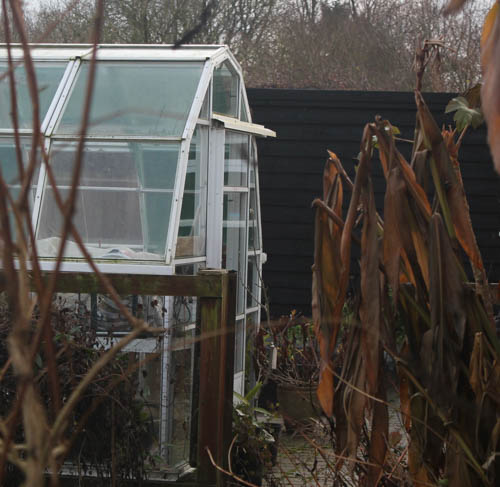
Keep the greenhouse guttering clear of debris which reduces their effectiveness and can eventually block the down pipes.
Clean all of your old pots and seed trays ready for sowing in spring. Wash with a solution of environmentally friendly disinfectant like Citrox, rinse, drain and allow to dry. Make sure you have pots and trays in a wide range of sizes so you are prepared to sow anything, in large or small quantities.
If you have already placed your seed orders, write the labels to go in the seed trays, and put them together in an elastic band in alphabetical order so you only have to add the sowing date, later on. It is not always practical to grow everything from seed due to space constraints, so make a list of plants you intend to sow and those to be bought as plug plants, then check the catalogues and internet for the best prices. Plug plants save time and space in the greenhouse and heating costs, too.
If you have a heated greenhouse, aubergines can be sown at 18-21°C (65-70°F) in pots or modules of peat-free seed sowing compost in a propagator. Once the seeds have germinated, provide grow lights, to maintain compact growth. Antirrhinums, lobelia, can be sown in a heated propagator at a minimum of 21-24C (70-75F). Lightly cover geranium seed with fine grade vermiculite. Begonia should be sown on the surface of moist compost and left uncovered as they need light to germinate. Sow summer cauliflowers and make small sowings of onions, radish and early carrots in a cold greenhouse towards the end of January. Peas, lettuce and radish can be sown in greenhouse borders.
If you missed sowing broad beans in autumn, sow some now under glass for an early summer harvest, 5-8cm apart and 2.5cm deep in deep trays of peat multipurpose compost or singly in small pots. Put them in a cool frost-free greenhouse, and ‘harden off’ before planting outdoors in early spring. Use ‘The Sutton’ and ‘Robin Hood’ – both dwarf and ideal for windy sites; ‘Aquadulce’ and ‘Aquadulce Claudia’.
Water plants showing signs of drought giving them just enough to prevent desiccation, water in the morning so the compost is dry before evening and don’t overwater and don’t splash water onto the leaves or into the crowns.
Strawberries that were lifted and potted up last summer, can now be brought into the greenhouse, putting them on the bench near the glass for maximum light. Once they start flowering, pollinate them by hand, transferring pollen from one flower to another using a fine artists brush. Keep the compost moist and feed with dilute tomato fertiliser every two weeks to encourage flowering and fruiting. They can be ‘hardened off ‘and planted outdoors later in the season.
Detach the main stems of grapes from their straining wires and scrape off the loose bark, then winter wash to control red spider mite and mealy bug. If you haven’t already done so, cut back last year’s stems to within one bud of the main framework, very early in the month before the sap starts to flow.
Happy New Year. Matt


